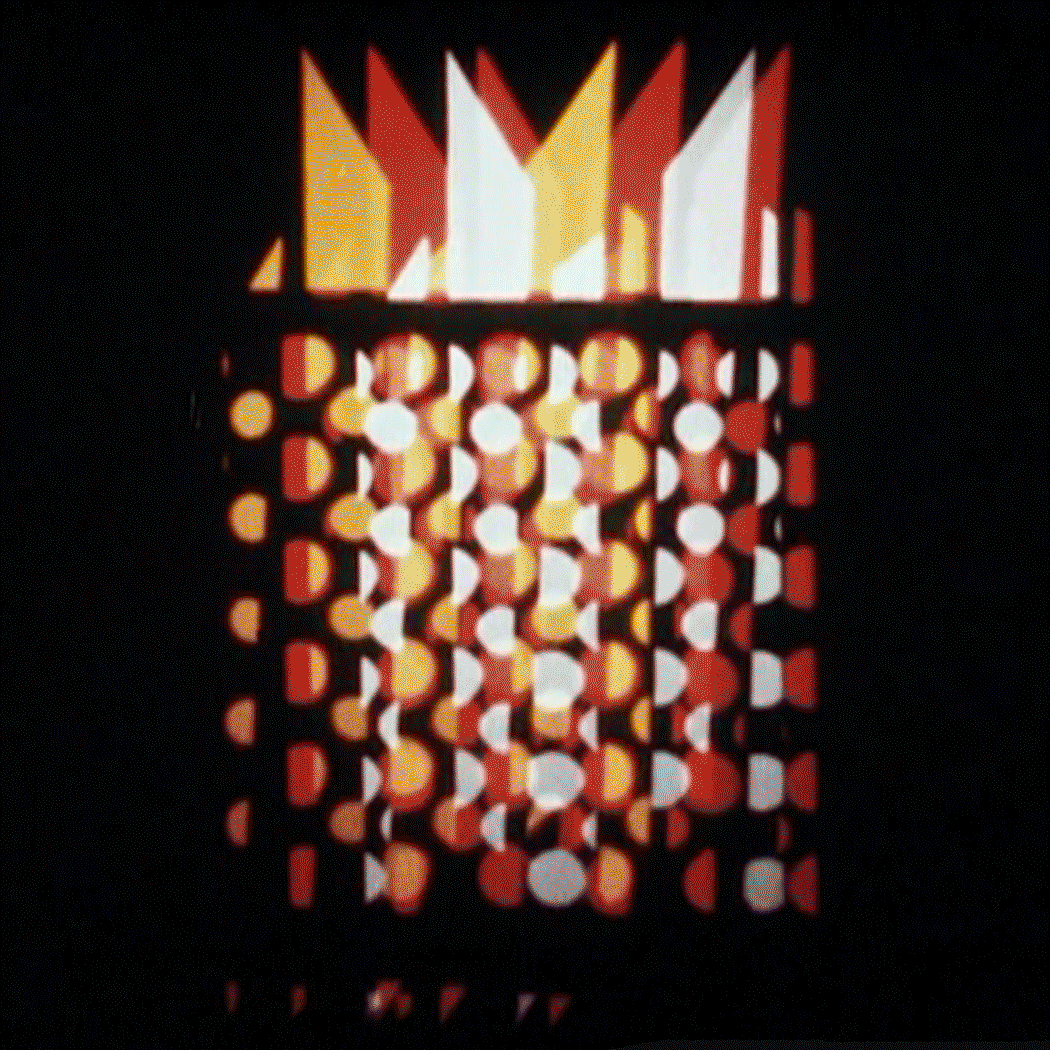Popular Culture in Britain Beyond the Bauhaus
September 21, 2019–January 12, 2020
Weekday Cross
Nottingham NG1 2GB
United Kingdom
T +44 115 948 9750
info@nottinghamcontemporary.org
Coinciding with the centenary of the Bauhaus, Still Undead traces how the pioneering art and design school’s ideas and teaching lived on in Britain, via popular culture and art school experimentation. Spanning the 1920s to the ’90s, and including works by some 50 artists, designers and musicians, Still Undead narrates the eclectic and fragmented ways that the Bauhaus’s legacy has been transmitted and transformed.
The exhibition’s point of departure is a “reflective coloured light game” by Kurt Schwertfeger, an apparatus he designed as a student for the Bauhaus Lantern Festival in 1922. Experiments of this kind were key elements of Bauhaus party culture, which blended music, costume and performance. They fed into the stage workshop, and would go on to find new contexts in commercial design and popular culture. Still Undead opens by locating this “light game” alongside a selection of sound and light pieces from the 1920s and early ’30s.
When the National Socialists came to power and the Bauhaus closed in 1933, a number of its masters and students—including Ludwig Hirschfeld-Mack, Walter Gropius, Otti Berger, Margaret Leischner and Edith Tudor-Hart—came to Britain. A lack of stable employment pushed many of these emigrés towards a variety of projects, making everything from sci-fi special effects and documentary photography to shop-window displays.
The exhibition later traces how Bauhaus pedagogy, including the preliminary course, reshaped British art schools in the 1950s and ’60s, exploring influential programmes developed by artists including Rita Donagh, Richard Hamilton and Victor Pasmore. Around this time, a young generation—among them, Mary Quant, Terence Conran and Vidal Sassoon—began to reimagine the aims of the Bauhaus for an era of consumerism and commercial design.
Still Undead concludes, via Bauhaus student performance work, photography and film, with an immersion into the subcultures of the 1970s and ’80s—from bands and club nights to DIY publishing. This includes the outrageous costumes and performances of Leigh Bowery, borrowing from Oskar Schlemmer’s Triadic Ballet, as well as art-school bands such as Soft Cell. This section of the exhibition is a collage of performance, music and graphic design, which invokes the spirit of Bauhaus parties and theatre. The exhibition title, Still Undead, is borrowed from a 1982 song by the British goth-rock band Bauhaus, suggesting that these spirits linger on.
The exhibition features the work of some 50 artists, designers and musicians, including Gertrud Arndt, Roy Ascott, Bauhaus (the band), Robyn Beeche, Otti Berger, Leigh Bowery, Robert Brownjohn, Laurie-Rae Chamberlain, Edmund Collein, Susan Collier and Sarah Campbell, Terence Conran, Rita Donagh, T. Lux Feininger, Ueli Frey, Maxwell Fry, Walter Gropius, René Halkett and David Jay, Richard Hamilton, Florence Henri, George Hinchcliffe and Ian Wood, Ludwig Hirschfeld-Mack, Tom Hudson, Kraftwerk, Kurt Kranz, Margaret Leischner, Liliane Lijn, John Maybury, Lucia Moholy, László Moholy-Nagy, Victor Pasmore, Mary Quant, Vidal Sassoon, Peter Saville, Oskar Schlemmer, Kurt Schwerdtfeger, Soft Cell, Frank Tovey (Fad Gadget), Edith Tudor-Hart, Stephen Willats.
bauhaus imaginista is a collaboration between the Bauhaus Kooperation Berlin Dessau Weimar, the Goethe-Institut and Haus der Kulturen der Welt (HKW). The research project with various exhibition stations is part of the centenary of the founding of Bauhaus. Still Undead is a chapter of bauhaus imaginista and is produced with Haus der Kulturen der Welt, Berlin, and Nottingham Contemporary. bauhaus imaginista is curated by Marion von Osten and Grant Watson. At Nottingham Contemporary, Still Undead will be co-curated by them and Sam Thorne. Research curators: Olivia Aherne, Gavin Butt, Cédric Fauq, Christian Hiller and Mariana Meneses.
Still Undead coincides with the tenth anniversary of Nottingham Contemporary. Since opening, more than two million people have visited more than 50 exhibitions of international contemporary art, as well as 1,000 free-to-attend events, talks and educational programmes.
Nottingham Contemporary was shortlisted for Art Fund Museum of the Year 2019.

